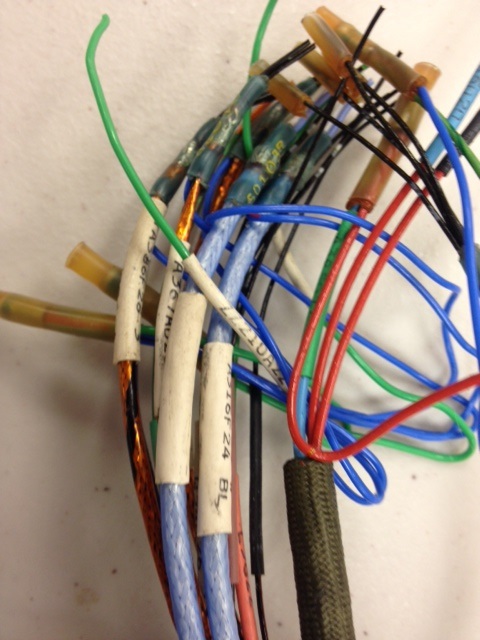Learning from the mistakes of the past is critical for ensuring reliability of systems created today. These lessons may be contained in industry standards documents with little or no explanation as to why the requirements were created (such as AS50881). This lack of historical knowledge and the loss of the answer to ‘why’ can leave newcomers and veteran system designers handicapped, being forced to blindly comply with a requirement that is not well understood. To maintain institutional application knowledge gained from space bound and ground support systems, NASA has developed an online resource. This NASA site provides a large repository of lessons learned and decades of experience in a searchable system. The following is a select review and explanation of each of the lessons learned.
Wire Identification
- Recommendation: Individual wire identification should be used on space flight vehicles.
- Benefit #1: Originally, the thought behind not identifying wires was that maintenance was unnecessary after launch. However, during the construction of the ARES I-X problems were found in long wire harnesses after installation. Significant challenges were faced by the repair crews in identifying the wire in need of replacement.
- Benefit #2: During harness construction, there were, “many cases where the wires were improperly pinned”. Had the wires been identified, reworking the connectors would have been easier as to identify those in the incorrect locations.

Handing Small Gauge Wires
- Recommendation: Stripping of small gauge wires (sizes smaller than 30AWG), regardless of application, should avoid mechanical methods. This is particularly recommended for transformer and inductors designed with coil wire between 38 and 32 AWG.
- Benefit: Mechanical processed for stripping wires of these sizes have been shown to damage the wire. Examination of transformers found with mechanical stripping of small gauge wires reveled breaks and damage at solder locations to larger terminals.
Harness Clamping
- Recommendation: Procedures should include tying of wire bundles before clamping and using totally insulated clamps.
- Benefit #1: After maintenance is performed on wire harnesses that require opening of clamps, it may be possible for a wire to become pinched into the clamp when tightened. Tying wires before clamping will help to reduce the likelihood of this occurring.
- Benefit #2: The use of totally insulated clamps will also reduce the chance of a damage wire shorting or arcing to the clamp.
Crimped Contacts
- Recommendation: When crimped contacts are to be used in spacecraft or ground support equipment cable harness assemblies, a requirement should be imposed on the fabricators, that color coded contacts and pull tests be incorporated into acceptance test procedures.
- Benefit: Visual inspections and not able to identify the laying and compression of the wires strands, integrity of the mating surface, and the physical strength of the connection.
These are just four of the nearly 100 lesson learned that NASA has with regard to wiring. This resource maintains the knowledge gained from the manufacture, testing, and launch of space bound platforms. Many of the recommendations and lessons learned can be applied to aircraft.
